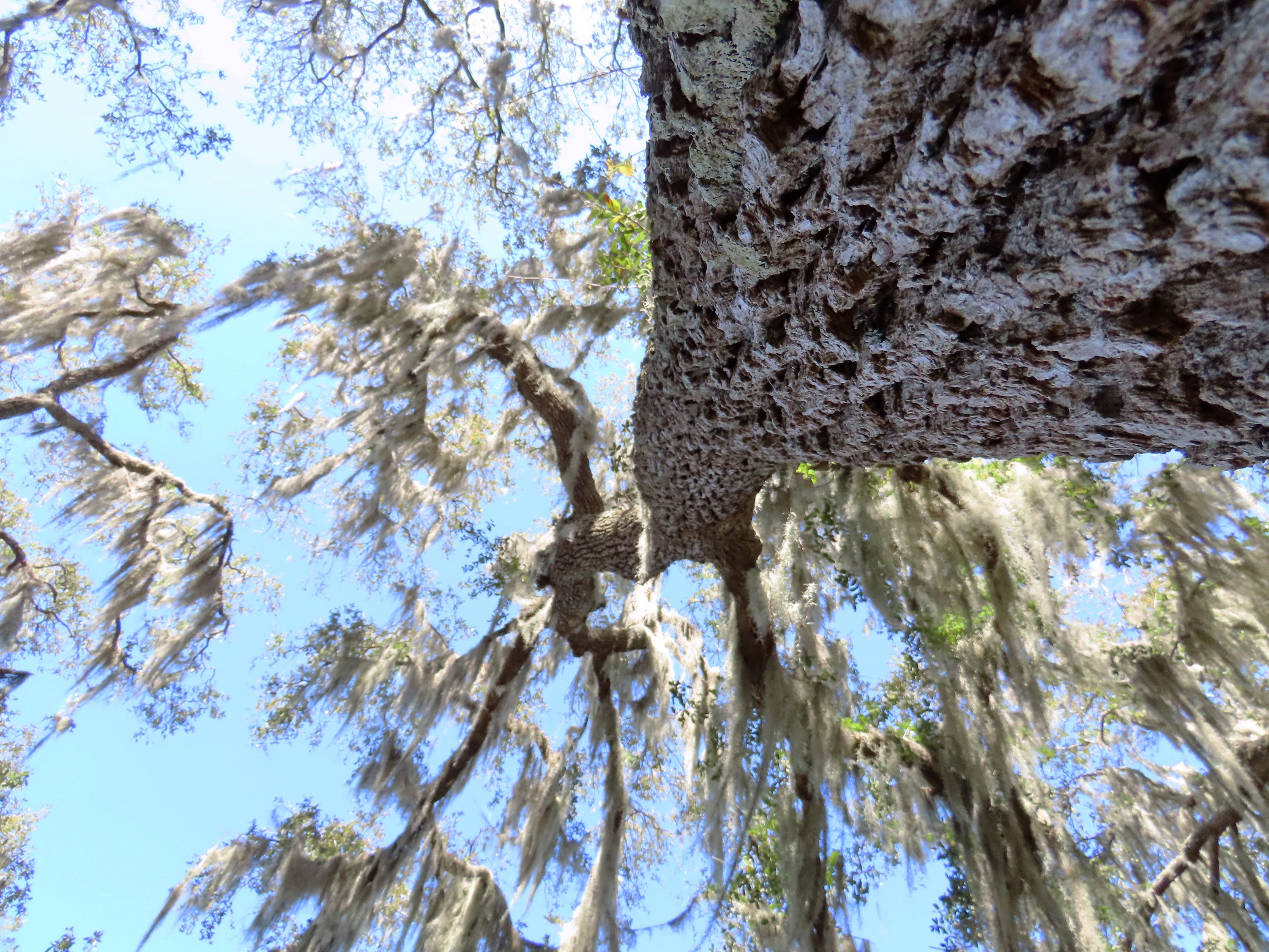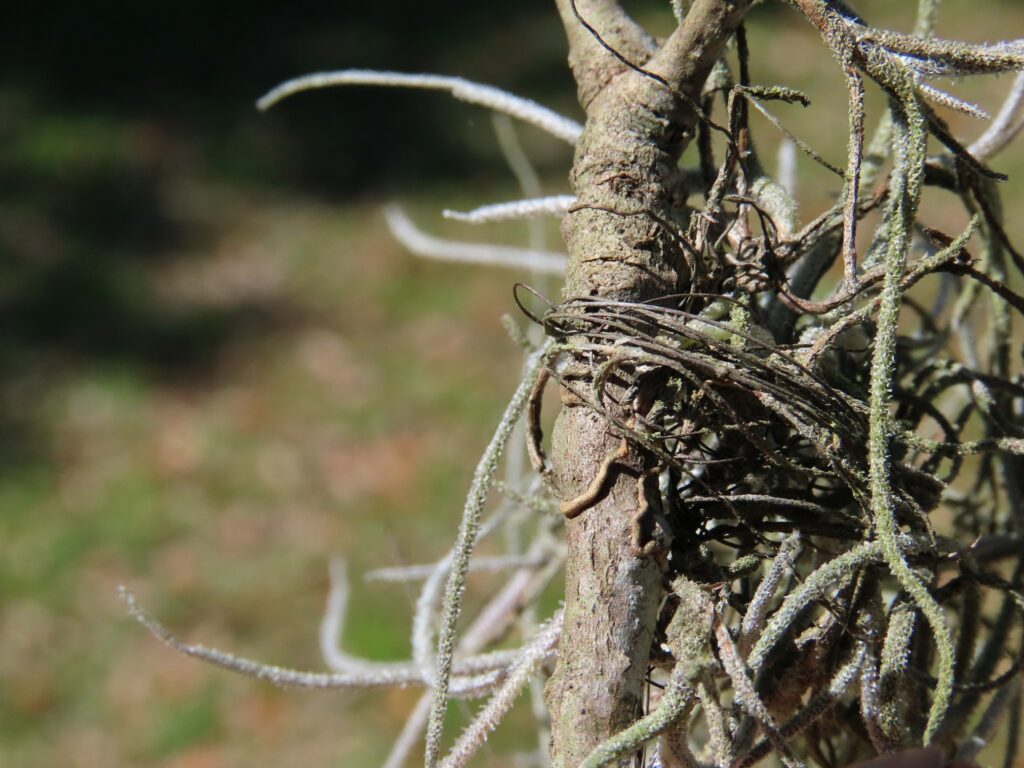


This week for Flora and Fauna Friday were learning to appreciate Spanish Moss (Tillandsia usneoides).
The sight of Live Oaks festooned in Spanish Moss, an inverted plume of smoke dipping over the bluff upon the marsh, is an iconic mark of our Edisto landscape. It’s a bewildering plant made of long, powdery-gray strings that mat and weave between each other into long beards that trail beneath the limbs of trees. It seems to appear from thin air, a gas that persists and proliferates despite any clear reason. A botanical stalactite. To many travelers, it is but a scenic addition to the coastline. Another curiosity in the holistic persona of that “Lowcountry” the locals speak of. To many of us who reside beside the sea and below the oaks it is an obnoxious weed that litters the lawn, clogs the mower, and flicks redbugs onto your wrist as you brush it aside. To me it is far more than either. It is a unique and important piece in the machine of our ecosystem. It has its place and purpose and that task is greater than what superficial character we assign it.
First let’s clear some misconceptions. Spanish Moss is neither a moss nor a parasite and it doesn’t require a host tree to grow. It’s a flowering plant and an epiphyte. More than just any old epiphyte, it’s an air plant. Spanish Moss belongs to the Bromeliads, a diverse plant family of mainly epiphytes as well as the Pineapple. Epiphytes are plants that grow on the surface of other plants without harming them. Most root into the bark of their perch and create their own blanket of soil. (Resurrection Fern is a good example of a traditional epiphyte.) Spanish Moss takes it a step further by being an air plant. Spanish Moss produces no roots other than the holdfast it uses to anchor itself to the bark of a tree. It subsists entirely off of rainwater, salt spray, windblown dust, insect excrement, and the various chemicals washed over it as rainwater trickles down the trunk of its supporting tree. As such, Spanish Moss needs no host tree if conditions are right, simply something to cling to. They will grow just fine on dead trees, eaves, and fences. Counter to common belief, they will grow on Pine Trees too. However, Pines tend to thrive in drier regions while growing taller with few limbs. Conditions Spanish Moss dislikes. As far as redbugs are concerned, those devils live near the ground in grassy areas, not in trees. So Spanish Moss undulating in the breeze is not a parasite concern.
So what good is Spanish Moss? In the past it was a favorite for stuffing furniture. The long strands were cooked to strip away the fleshy exterior and expose their dark, fibrous core. This fiber was durable and rot resistant, making a great packing material and stuffing for mattresses. But what is it good for now? Your garden and lawn of course! Spanish Moss is an air plant. That means it contains chemicals necessary for the growth of plants, and it plucked them from thin air. On top of that its flesh rapidly composts while its fiber core remains for months. It is fertilizer, compost, and mulch wrapped into one lightweight package that conveniently falls like mana from the trees! As a gardener, what’s not to love about it? This package deal of decomposition is an important part of the nutrient cycle in our maritime forests. The Spanish Moss mixes with the annual deluge of Live Oak leaves each spring to brew a rich top soil that rejuvenates thin and sandy soils, like those found on Edisto Island. If you leave it where it lay and tolerate the havoc it reeks on mower spindles, your yard will thank you. If that’s yet a bridge too far for you, do not cast it over the bluff or deposit it along the woodlot just yet. Skirt your trees, your shrubs, your vegetables, and your flowers with it and reap benefits of this curly gray gift from on high.